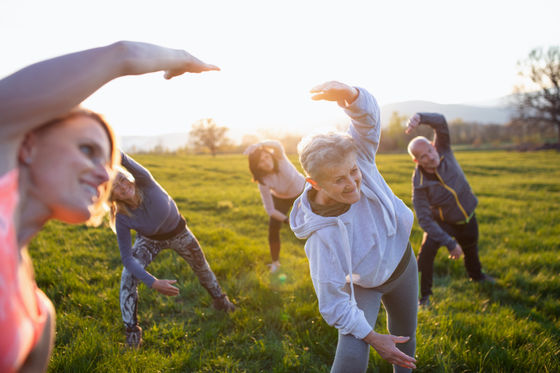What kind of exercise is more effective as a result of research that exercise reduces the risk of all deaths?

Data from more than 270,000 participants found that finding time to exercise reduced the risk of a wide range of deaths, including cardiovascular disease and cancer. In addition, this study also found that even a small amount of exercise has a certain effect, and the type of exercise that particularly reduces the risk of death.
Association of Leisure Time Physical Activity Types and Risks of All-Cause, Cardiovascular, and Cancer Mortality Among Older Adults | Geriatrics | JAMA Network Open | JAMA Network
Many Leisure Time Activities May Lower Risk of Death - NCI
https://dceg.cancer.gov/news-events/news/2022/leisure-activities-mortality
Leisure Time Can Lower Risk of Early Death as You Get Older, Scientists Find : ScienceAlert
https://www.sciencealert.com/leisure-time-can-lower-risk-of-early-death-as-you-get-older-scientists-find
Although there is a lot of research on exercise and health, not much research has actually focused on the type of exercise, and even if it does, it will focus on young people, so there are no long-term, tangible benefits. I don't know much about
Therefore, a research team led by Eleanor L. Watts of the National Cancer Institute conducted a study to analyze the results of a questionnaire conducted jointly with the American Retired Association. The study followed 272,550 adults aged 59 to 82 for an average of 12 years and collected data on mortality from cardiovascular disease and cancer in the elderly, as well as various exercise habits.

The research team calculated the
MET is an indicator of exercise intensity. Converting 7.5 to 15 MET hours per week into moderate-intensity aerobic exercise such as brisk walking results in 2.5-5 hours per week, while high-intensity aerobic exercise such as running and cycling translates into 1.25-2.5 hours per week. It is equivalent to time.
Racquet sports such as tennis were particularly effective, with a 16% reduction in overall mortality risk and a 27% reduction in cardiovascular mortality risk. Running also reduced the overall mortality risk by 15%, and the cancer reduction effect was 19%, which was the top in seven categories.
The research team said, ``Racquet sports require hand-eye coordination and intermittent high-intensity exercise, so it may be effective in improving physical function, especially among exercise.'' I'm guessing.
The study also found that people who didn't get enough exercise recommended by health authorities had a 5% lower risk of death than those who didn't exercise. In other words, even if the amount of exercise is not large, exercise will have the effect of reducing the risk of death.

From this point of view, Watts et al. said in their paper, ``Instead of selecting a specific exercise based on the reduction effect found this time, it is more profitable to find an exercise that can be enjoyed by elderly and lack of exercise. It is possible,” he concluded.
Related Posts:
in Science, Posted by log1l_ks







